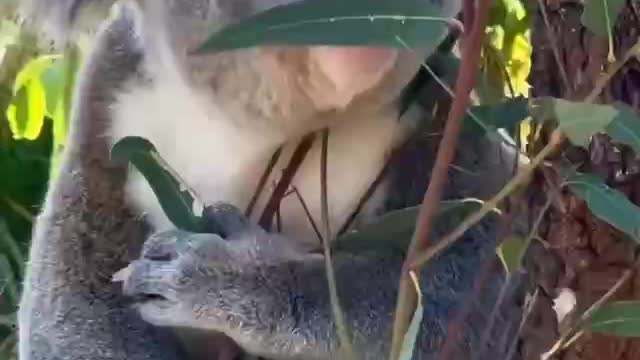Premium Only Content

November 5, 2022
What is the koala?
The koala is an iconic Australian animal. Often called the koala “bear,” this tree-climbing animal is a marsupial—a mammal with a pouch for the development of offspring.
Though koalas look fuzzy, their hair is more like the coarse wool of a sheep. They have two opposing thumbs on their hands, and both their feet and hands have rough pads and claws to grab onto branches. They have two toes, fused together, on their feet, which they use to comb their fur.Habitat, behavior, and diet
Koalas live in the eucalyptus forests of southeastern and eastern Australia. When not sleeping, they’re usually eating. They rely on the eucalyptus tree for both habitat and food. Koalas can eat more than a pound of eucalyptus leaves a day. Eucalyptus is toxic, so the koala’s digestive system has to work hard to digest it, breaking down the toxins and extracting limited nutrients.
That’s why koalas sleep so much—they get very little energy from their diet. Tucked into forks or nooks in the trees, koalas may sleep for 18 to 22 hours.
Koalas usually don’t drink much water as they get most of their moisture from these leaves. Koalas can even store leaves in their cheek pouches for later. They eat so much eucalyptus that they often take on its smell.Threats to survival
Koala numbers plummeted in the late 19th and early 20th century from hunting for their fur. Now they face serious threats from habitat loss. Land clearing, logging, and bushfires—especially the devastating 2019-2020 season—have destroyed much of the forest they live in. Koalas need a lot of space—about a hundred trees per animal—a pressing problem as Australia's woodlands continue to shrink.
Koalas are listed as vulnerable by the International Union for the Conservation of Nature, which has named the species one of 10 animals most vulnerable to climate change. Increasing carbon dioxide in the atmosphere is decreasing the nutritional quality of eucalyptus leaves (which is already quite low) and causing longer, more intense droughts and wildfires. In response to drought, koalas are forced to stop napping and come down from the trees to find water, spending precious energy and putting them at a higher risk of predation.
Predators include dingoes and large owls. They’re also at risk of getting hit by cars and attacked by dogs. Chlamydia is widespread in some koala populations and can cause blindness, infertility, and sometimes death.
-
 LIVE
LIVE
Alex Zedra
53 minutes agoLIVE! Come Play WoT with me!
461 watching -
 1:08:43
1:08:43
The Charlie Kirk Show
1 hour agoTHOUGHTCRIME Ep. 74 — Charlie's Campus Return? Robo-Butlers? Garden of American Heroes?
3.54K1 -
 LIVE
LIVE
Drew Hernandez
9 hours agoDOGE EXPOSES $2 BILLION SCHEME LINKED TO STACEY ABRAMS?!
1,071 watching -
 DVR
DVR
Slightly Offensive
1 hour agoIs the US Headed for MORE WAR Under TRUMP? | Guest: Scott Horton
1.52K -
 58:29
58:29
The StoneZONE with Roger Stone
1 hour agoRoger Stone Hails Confirmation of Kash Patel, Trashes Schiff for Attacks On Patel | The StoneZONE
11.7K -
 LIVE
LIVE
Precision Rifle Network
1 day agoS4E5 Guns & Grub - The Best Rifle Under $2000
61 watching -
 1:02:54
1:02:54
Glenn Greenwald
23 hours agoSouth Korean Economist Ha-Joon Chang on the Economic World Order, Trump's Tariffs, China & More | SYSTEM UPDATE #410
29.3K28 -
 1:02:27
1:02:27
Donald Trump Jr.
6 hours agoBye Mitch, plus Kash confirmed, Interview with AJ Rice | Triggered Ep.218
81.8K58 -
 LIVE
LIVE
The Amber May Show
8 hours agoWomen Of Rumble 02-20-25
241 watching -
 41:18
41:18
Kimberly Guilfoyle
6 hours agoToday, We Kash in on Equal Justice, Live with Ryan Walters & Daniel Turner | Ep.198
66.2K20